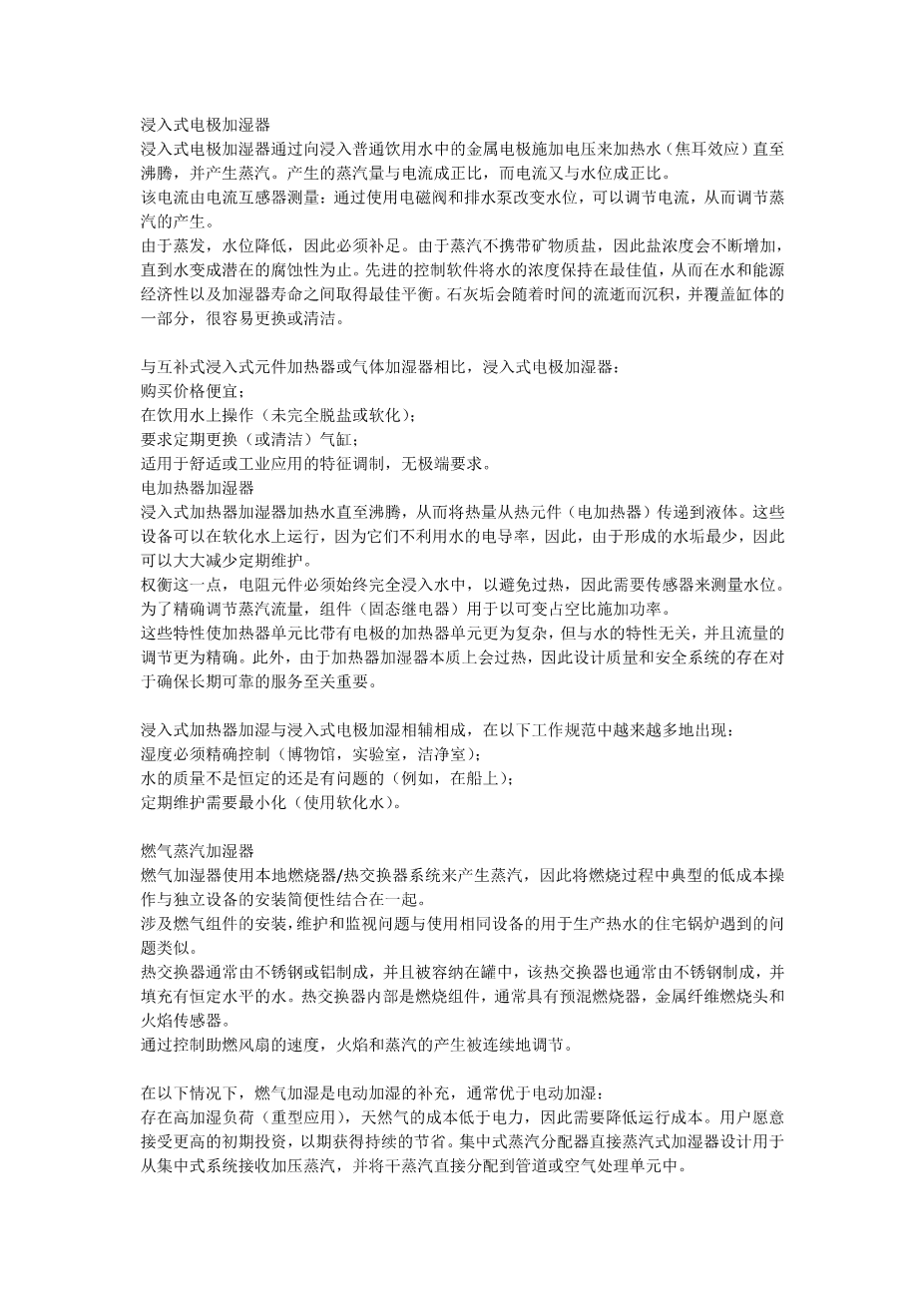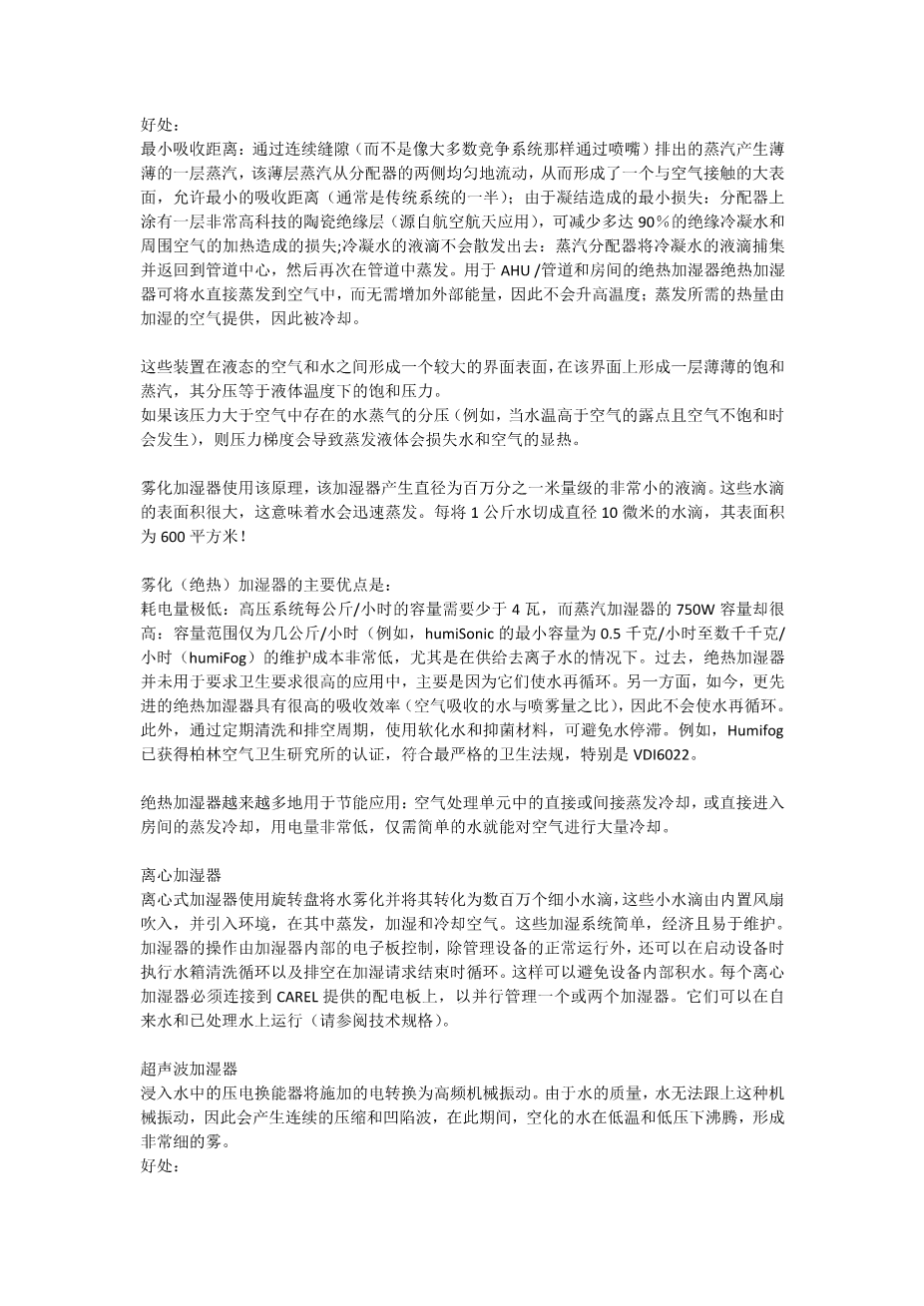Immersed electrode humidifiers
Immersed electrode humidifiers, by applying a voltage to metal electrodes immersed in common drinking water, heat the water (Joule effect) until boiling, producing steam. The quantity of steam produced is proportional to the electric current, which is in turn proportional to the level of water.
This electric current is measured by a current transformer: by varying the level of water using a fill solenoid valve and drain pump, the current, and consequently the steam production, can be modulated.
Due to evaporation, the level of water decreases and must therefore be topped up. As steam does not carry mineral salts, the salt concentration increases until the water becomes potentially corrosive; the sophisticated control software keeps the water concentration at the optimum value, creating the best compromise between water and energy economy, and humidifier life. Lime scale is deposited over time and covers part of the cylinder, which can easily be replaced or cleaned.
Compared to the complementary immersed element heater or gas humidifiers, immersed electrode humidifiers:
are less expensive to purchase;
operate on drinking water (not completely demineralised or softened);
require the periodical replacement (or cleaning) of the cylinder;
feature modulation suitable for comfort or industrial applications, without extreme requirements.
Electric heater humidifiers
Immersed heater humidifiers heat the water until boiling, thus transferring heat from the hot element (electric heater) to the liquid. These appliances can operate on demineralised water, as they do not exploit the electrical conductivity of the water, and periodical maintenance can therefore be greatly reduced, due to the minimum formation of lime scale.
Weighing against this, the resistive elements must always be completely immersed in the water, to avoid overheating, and consequently sensors are need to measure the water level. To precisely modulate the steam flow-rate, components (solid state relays) are used to apply power with a variable duty cycle.
These characteristics make the heater units more complex than their counterparts with electrodes, yet independent of the characteristics of the water, and with much more precise modulation of the flow-rate. In addition, as heater humidifiers are intrinsically subject to overheating, the quality of design and the presence of safety systems are essential to ensure reliable service over time.
Immersed heater humidification, complementary to immersed electrode humidification, is becoming increasingly present in work specifications where:
humidity must be controlled precisely (museums, laboratories, cleanrooms);
the quality of the water is not constant or is problematic (for example, aboard ships);
periodical maintenance needs to be minimised (using demineralised water).
Gas-fired steam humidifiers
Gas-fired humidifiers use a local burner/heat exchanger system to produce steam, consequently combining the low-cost operation typical of the combustion process with the simplicity, in installation terms, of a stand-alone appliance.
The installation, maintenance and surveillance problems involving the gas assembly are similar to those encountered with residential boilers for the production of hot water, which use the same devices.
The heat exchanger is generally made from stainless steel or aluminium, and is contained in a tank, it too normally made from stainless steel, filled with water to a constant level. Inside the heat exchanger is the combustion assembly, generally featuring premix burners, metal fibre combustion head and flame sensors.
The flame, and consequently steam production, is modulated continuously by controlling the combustion air fan speed.
Gas-fired humidification, complementary to electrically powered humidification, is generally preferred to the latter when:
there are high humidification loads (heavy-duty applications) the cost of gas is lower than electricity and consequently running costs need to be kept down the user is willing to accept a higher initial investment to obtain ongoing savings over time Centralised steam distributors Direct steam humidifiers are designed to receive pressurised steam from a centralised system and distribute dry steam directly into a duct or air handling unit.
Advantages:
minimum absorption distance: the outlet of steam through continuous slits (rather than through nozzles, as in most of the competing systems) creates a thin layer of steam that flows uniformly from both sides of the distributor, creating a large surface of contact with the air, allowing a minimum absorption distance (typically half the distance of conventional systems);minimum losses due to condensation: the distributors are coated with a layer of very high tech ceramic insulation (deriving from aerospace applications), which reduces by up to 90% the losses due to condensate and the heating of the surrounding air;no emission of droplets of condensate: the steam distributors trap and return any droplets of condensate back to the centre of the pipe, where these evaporate again. Adiabatic humidifiers for AHU/ducts and rooms Adiabatic humidifiers bring about the direct evaporation of water into the air without adding external energy, and therefore without raising the temperature; the heat required f
剩余内容已隐藏,支付完成后下载完整资料
英语译文共 8 页,剩余内容已隐藏,支付完成后下载完整资料
资料编号:[606317],资料为PDF文档或Word文档,PDF文档可免费转换为Word
课题毕业论文、外文翻译、任务书、文献综述、开题报告、程序设计、图纸设计等资料可联系客服协助查找。




